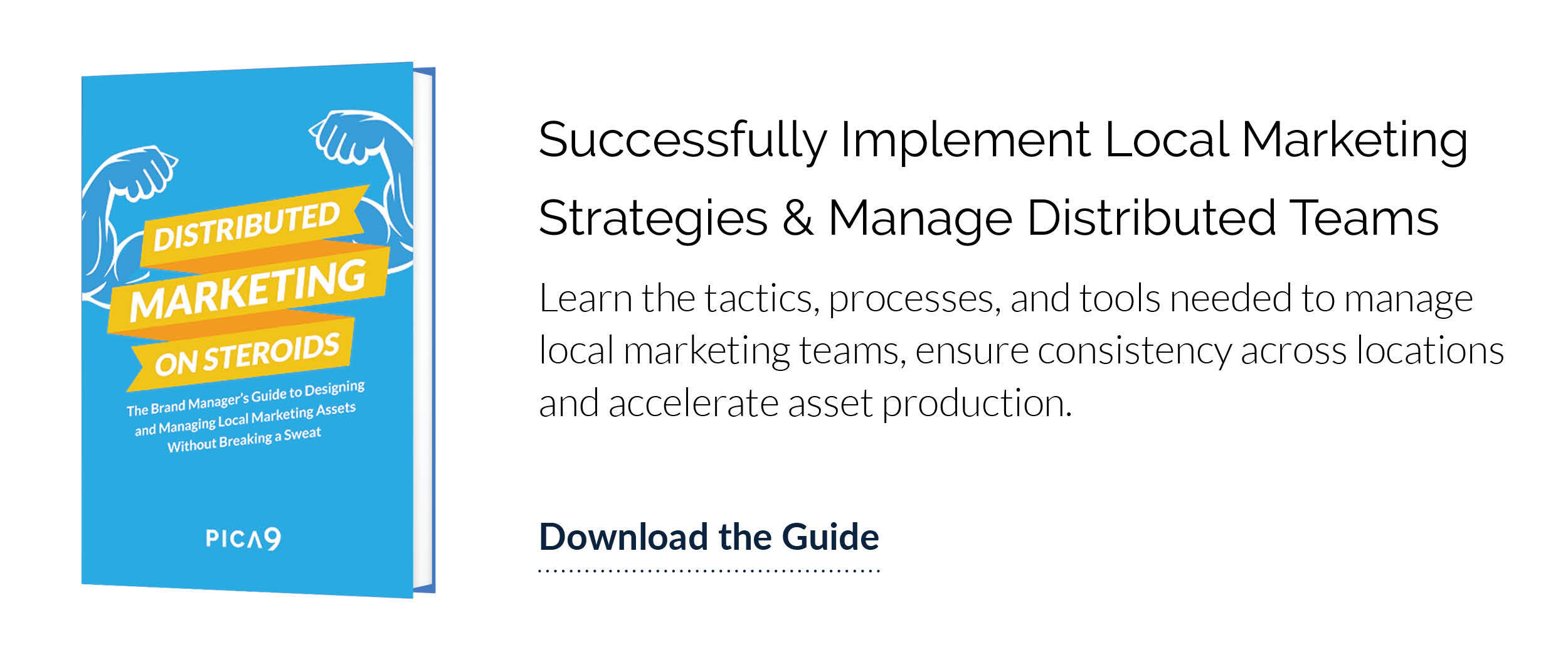So, you purchased a new marketing resource management solution. Now what?
For enterprise organizations adopting marketing resource management tools for the first time, there is a potential for enormous gains in cost savings, productivity, and more. While the benefits of marketing resource management software vary immensely from business to business, a recent study attempted to build a model of the average enterprise to measure the impact of marketing resource management.
On average, distributed organizations can achieve:
- One-third fewer internal resource costs
- One-half the agency spend
- One-eighth reduction in media, production, and materials spend
Have you unlocked the full potential of your marketing resource management tool? Here are the steps your multi-located enterprise should take to kick its marketing resource management solution into hyperdrive.
 5 Steps to Maximize the Effectiveness of Your Marketing Resource Management Solution
5 Steps to Maximize the Effectiveness of Your Marketing Resource Management Solution
As you know, marketing resource management software is a one-stop system of record for all of your brand's marketing activities including the uploading, storing, and sharing of digital assets. Additionally, these tools streamline various marketing processes, even in a complex network of global contributors and franchisees.
Follow these five steps to maximize the effectiveness of your software:
1. Identify Software Goals and Objectives
The first step to building a results-driven marketing resource management solution is to define software goals and objectives and develop key performance indicators.
"Our customers are most successful when we define goals and objectives that are achievable at the outset. Once we meet those goals, we work with the customer to develop new one," says Ayelet Wiedermann, Director of Demand Generation at Pica9.
It's important to narrow your focus, prioritize what matters most, work towards those goals, and create benchmarks for measurable success. After you reach those goals, create new ones, and continue to leverage the tool's other features. Pica9's customer success managers meet with customers to regularly evaluate progress versus goals.
2. Align With Local Marketers
Next, align with local marketing teams. What difficulties are your local marketers facing when it comes to campaign activation? How can you streamline local marketers' work within the system? Since marketing resource management is made up of many different kinds of software systems, you need to understand local marketers' frustrations and match a tool to those pain points.
Here are the three types of marketing resource management solutions:
Project Management: Track, manage, and allocate tasks and projects to specific team members. A project management system helps allocate human resources.
Digital Asset Management: Organize and manage large numbers of files including images, videos, and audio. A digital asset management solution makes it easier to find and use resources in the marketing department.
Local Marketing Automation: Enable local marketers, affiliates, and franchisees to find and use marketing collateral that is on-brand and customized to them and their unique market, region or store.
3. Create Organizational Structure
Next, create an organizational structure to make file ingestion easy. Most marketing resource management solutions will allow you to tag files with terminology that makes sense to your local affiliates, not just in-house design teams. This will enable users to find assets through search, metadata, collections, and other tools.
You might consider including some of the following information in your file names:
- Project or campaign name
- Type of asset
- Date or time
- Location
4. Build a Rollout Plan
Next, build a marketing resource management solution rollout plan. How will this system be introduced to the distributed network? As a best practice, consider limiting the number of features available to local affiliates. As the marketers become more familiar with software functionality, loosen the reigns.
Limiting the amount of control users have, especially during the first few months of software implementation, keeps local marketers focused on the right features. Use this as an opportunity to teach local marketers how to use the system and roll out additional features intermittently or as new needs arise.
5. Commit to Ongoing Maintenance
Finally, commit to ongoing software maintenance. In most cases, customer support teams are more than willing to meet with you and your team to talk about new features and updates. A simple meeting with customer support is the quickest and easiest way to make sure your team is aligned around the software provider's newest offerings.
Achieve Marketing Resource Management Mastery
Over the years, we've had the opportunity to work with hundreds of recognized multi-located brands including Marriott and Polaris. These are just two examples of highly successful distributed enterprises that have achieved significant gains with a modern approach to marketing resource management.
To learn more about the success of these and other distributed enterprises, we invite you to download our free guide. You'll learn:
- How to create an actionable strategy for managing distributed and local teams
- How to design marketing assets distributed marketers can actually use
- How to support distributed marketers and drive brand compliance





